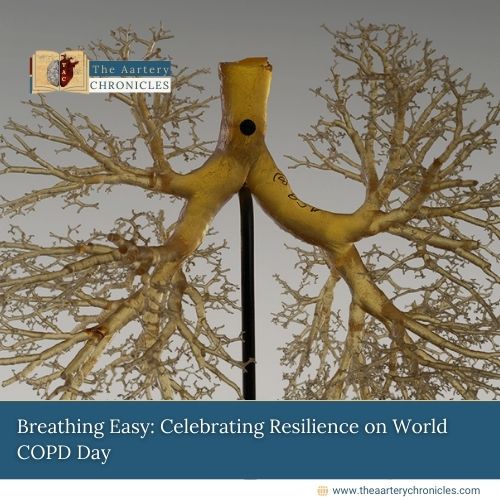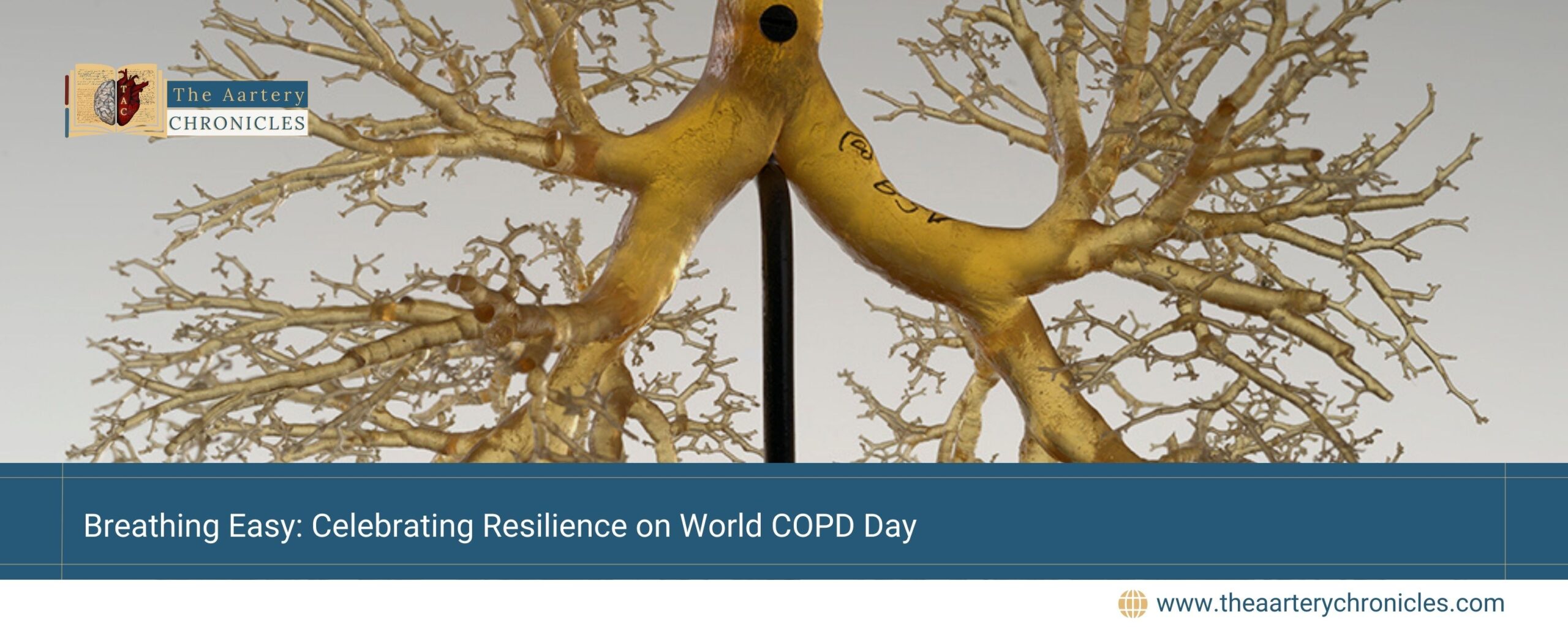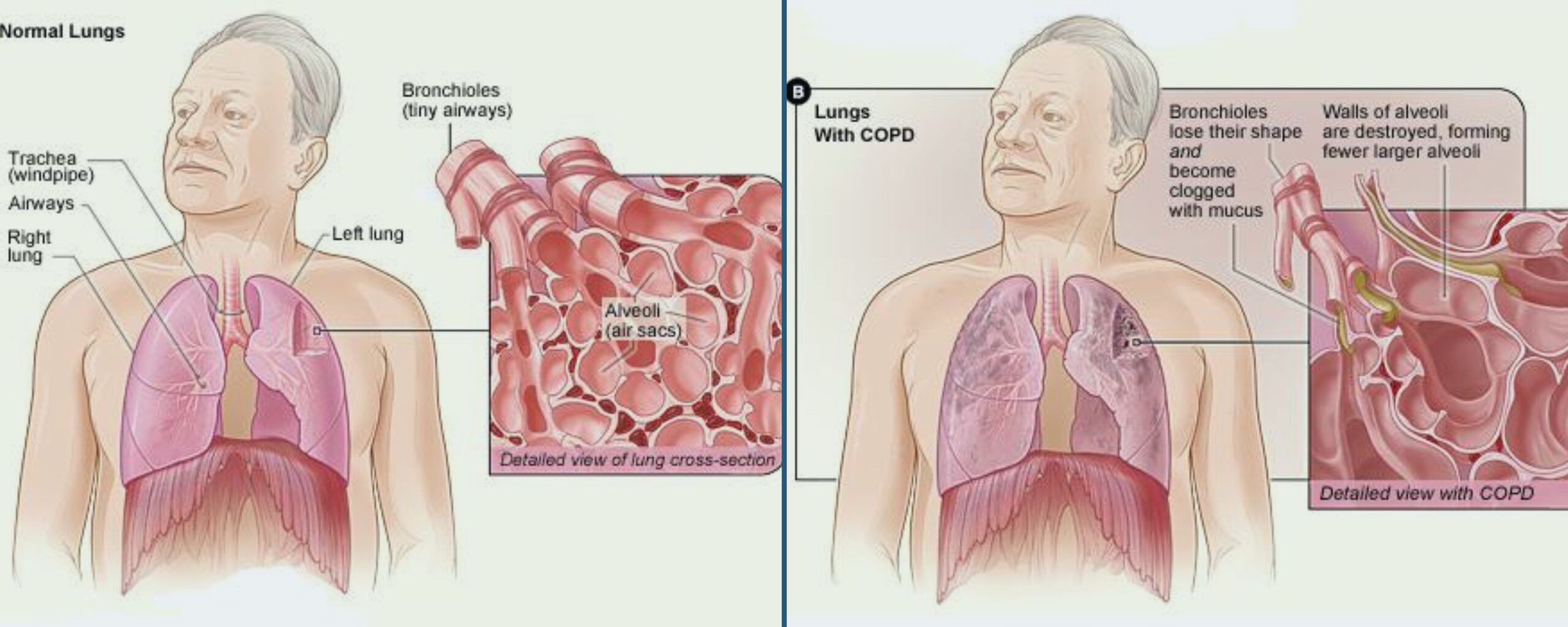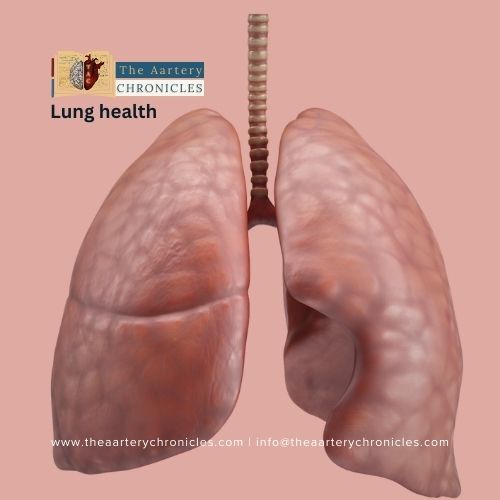

Breathing Easy: Celebrating Resilience on World COPD Day
Overview
Globally, COPD affects an estimated 390 million people and is the third leading cause of death. India shoulders a disproportionately high share of this burden, with approximately 55.3 million COPD cases as of 2019, according to the Global Burden of Disease study. The disease accounts for nearly 29% of all COPD-related deaths worldwide, making it a critical public health challenge in the country.
World Chronic Obstructive Pulmonary Disease (COPD) Day is observed annually on the third Wednesday of November to raise awareness about this progressive lung disease, promote preventive measures, and improve care for those affected. COPD is characterized by persistent respiratory symptoms such as
- Breathlessness
- Chronic cough
- Excessive sputum production
The progressive nature of COPD means that symptoms worsen over time, but early detection can significantly improve quality of life.
This global observance is spearheaded by the Global Initiative for Chronic Obstructive Lung Disease (GOLD) and draws attention to the urgent need to address the burden of COPD worldwide.
Why is World COPD Day important?
World Chronic Obstructive Pulmonary Disease (COPD) Day is not just another day on the health awareness calendar; it is a critical observance aimed at addressing one of the world’s most significant and underestimated health challenges. World COPD Day educates the public about the signs, risk factors, and consequences of the disease, empowering individuals to seek timely diagnosis and treatment.
In India:
- According to the 2019 Global Burden of Disease (GBD) report, COPD is the second leading cause of death, following cardiovascular diseases.
- The 2019 Global Burden of Disease (GBD) report estimated the prevalence of COPD in India to be 37.8 million cases.
- COPD accounts for over 9.5% of total deaths in the country, making it a critical public health issue.
- Over 60% of households use biomass fuels for cooking and heating, exposing residents to harmful indoor air pollution.
- More than 35 million workers in industries like construction and road sweeping are exposed to dusty environments.
COPD is preventable and treatable, but addressing its burden requires a collective effort from individuals, healthcare systems, and governments. The data serves as a wake-up call to prioritize lung health and combat the silent epidemic of COPD.
What is Chronic Obstructive Pulmonary Disease (COPD)?
Chronic Obstructive Pulmonary Disease (COPD) is a long-term lung disorder that restricts airflow and causes breathing difficulties. It is an umbrella term encompassing chronic bronchitis and emphysema, which often occur together.
Symptoms of COPD
Symptoms of COPD can range from mild to severe and often worsen with time as the disease progresses. Early detection and timely intervention are crucial for managing the symptoms and slowing down the disease’s progression. Some of the common warning signs and symptoms of COPD that should not be overlooked include:
- Persistent cough (often called “smoker’s cough”)
- Cough with mucus that lasts for three months or longer at a time
- Shortness of breath, especially during mild exertion
- Wheezing or noisy breathing
- Chest tightness
- Fatigue or weakness
- Frequent respiratory infections
- Barrel-shaped chest

Causes of COPD
Some of the main causes and risk factors for developing COPD include:
- Smoking
- The leading cause of COPD, smoking is responsible for about 80-90% of COPD cases.
- Long-term smoking damages the airways and alveoli (air sacs in the lungs), leading to inflammation, narrowing of the air passages, and loss of lung elasticity.
- Both cigarette smoking and cigars increase the risk, and even exposure to second hand smoke can contribute to COPD.
- Air Pollution
- Both outdoor and indoor air pollution contribute significantly to the development of COPD.
- Outdoor air pollution from traffic, industrial emissions, and other sources can irritate the lungs over time.
- Indoor air pollution from burning biomass fuels (like wood, coal, or animal dung) for cooking or heating is a major risk in developing countries.
- Exposure to second hand smoke from other people’s tobacco use also increases the risk of COPD.
- Occupational Hazards
- Long-term exposure to dust, chemicals, fumes, and other harmful substances at the workplace can lead to COPD.
- People working in industries like construction, mining, agriculture, painting, and metalworking are at higher risk due to exposure to airborne particles and toxic chemicals.
- Genetic Factors
- Alpha-1 antitrypsin deficiency is a rare genetic condition that can increase the risk of COPD, even in non-smokers.
- Age
- The risk of COPD increases over the age of 65.
- The risk increases with age, particularly for people with a history of smoking or exposure to lung irritants.
World COPD Day 2024 Theme
The Global Initiative for Chronic Obstructive Lung Disease (GOLD) announces theme for World COPD Day every year in order to educated the public about the disease and its different aspects. This year’s theme for World COPD Day is announced as “Know Your Lung Function,” which aims to shed the spotlight on the significance of understanding and tracking lung function (aka spirometry) meticulously.
How to Know Your Lung Function?
- Spirometry: Spirometry is a simple and non-invasive test that measures how much air a person can breathe in and out, as well as how quickly they can exhale. It’s the primary tool used to diagnose COPD and assess its severity.
- Peak Flow Measurement: This test measures how fast an individual can blow air out of their lungs, helping assess the condition of their airways.
- Blood Tests (ABGs): These tests measure the oxygen and carbon dioxide levels in the blood, which can be useful in evaluating lung function, especially in advanced stages of COPD.
- Chest X-ray or CT scan: These imaging tests provide a visual assessment of the lungs and can detect structural changes related to COPD.
Preventing COPD: What You Can Do?
Prevention and management of COPD start with reducing exposure to known risk factors. Some preventive measures to reduce the risk of developing COPD include:
Quit Smoking
Quitting smoking is the most crucial step in preventing or slowing the progression of the disease.
Improve Indoor Air Quality
Ensure proper ventilation, reduce exposure to smoke from cooking and heating, and consider using air purifiers.
Wear Protective Gear
If exposed to dust or chemicals at work, wear masks and follow safety protocols.
Avoid Air Pollution
Monitor air quality levels and avoid outdoor activities during high pollution periods.
The Role of Healthcare Systems
Improving access to diagnostic tools like spirometry, strengthening primary healthcare systems, and creating supportive policies are essential to addressing the growing burden of COPD. Public awareness campaigns can educate communities about the risks and symptoms of the disease, encouraging earlier detection and intervention.
COPD Success Stories: Inspiring Change
In recent years, several programs have shown promise in combating COPD in India. For example:
- Pradhan Mantri Ujjwala Yojana: By providing LPG connections to over 9.59 crore households, the initiative has reduced exposure to biomass smoke among rural women, a significant step toward preventing COPD.
- National Program for Prevention and Control of Cancer, Diabetes, Cardiovascular Diseases, and Stroke (NPCDCS): While not specific to COPD, this program emphasizes integrated management of chronic diseases, including respiratory conditions, at the community level.
Join the Fight Against COPD
This World COPD Day, let’s unite to tackle COPD in India and beyond. Whether by participating in awareness campaigns, advocating for cleaner air policies, or supporting community health programs, every effort counts in helping people breathe easier and lead healthier lives.





